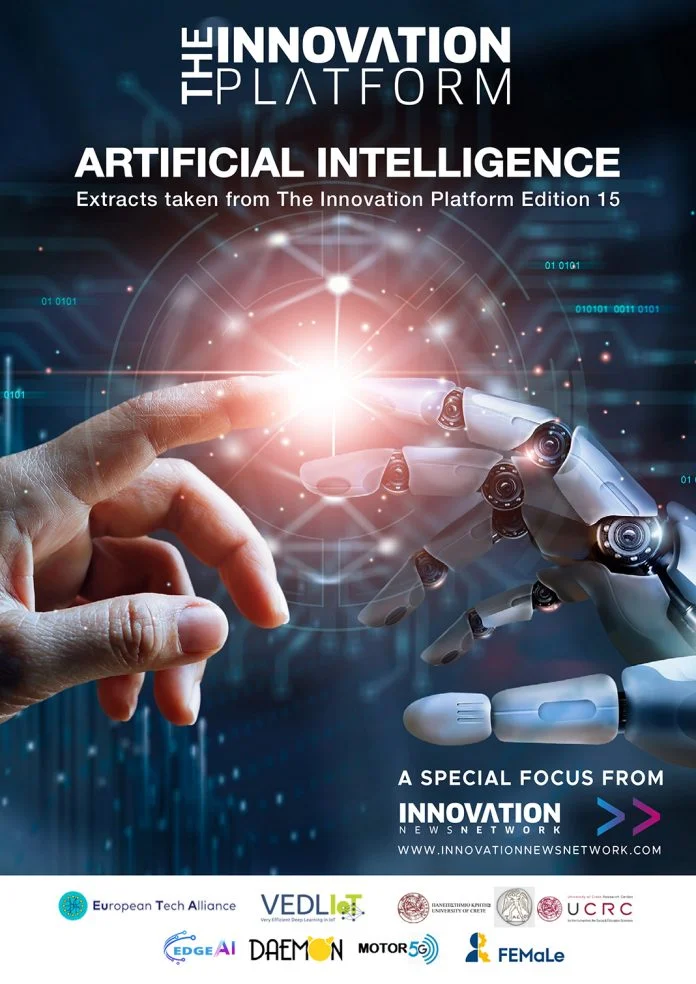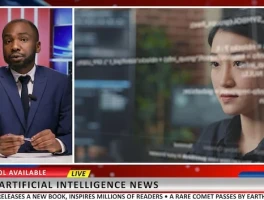The headlines are screaming, the pundits are warning, and the veterans of booms past are shaking their heads with a weary sense of déjà vu. “It’s going to be really bad,” warns early AI entrepreneur Jerry Kaplan, looking at the billions, now trillions, being poured into artificial intelligence. The words echo from Wall Street to London: “Bubble.” “Financial engineering.” “Circular financing.” And you know what? They’re not entirely wrong. But they are, I believe, missing the forest for the trees.
We’re all so conditioned to look for the patterns of the past—the dot-com bust, the housing crisis—that we’re trying to fit a paradigm-shifting moment into an old, familiar box. We see the tangled web of deals—Nvidia investing in OpenAI, which then buys chips from Nvidia and its rivals, while Microsoft and Oracle pour in hundreds of billions more—and we see the specter of Nortel, the doomed telecom giant that financed its own customers to create a phantom market. It’s a tempting and easy narrative. A tangled web of deals stokes AI bubble fears in Silicon Valley.
But when I look at the chaos, the frantic deal-making, and the eye-watering valuations, I don’t just see a financial bubble. I see something far more profound, far more foundational. When I first saw the details of OpenAI’s $500 billion Stargate project—a 10-gigawatt supercomputer complex rising from the Texas desert—I honestly just sat back in my chair, speechless. This isn't just about code or algorithms anymore. This is about silicon, power, and steel. We are witnessing the frantic, messy, and breathtakingly ambitious construction of a new kind of global infrastructure, and the so-called bubble is merely the sound of the scaffolding going up at lightning speed.
A Revolution Forged in Silicon, Not Just Speculation
Let’s step back for a moment. Think about the great infrastructure booms of the past. The railroad expansion of the 19th century was rife with speculation, corruption, and spectacular financial collapses. Companies went bust, investors lost fortunes, and bubbles inflated and burst with regularity. But did any of that change the fundamental truth that the railroad was reshaping the continent, collapsing distances, and creating the very framework for the modern industrial economy? Of course not. The financial frenzy was a symptom of the revolution, not the revolution itself.
That’s what we’re seeing today. The debate over “circular financing” is a perfect example of this misinterpretation. Skeptics see Nvidia investing in a startup like CoreWeave, which then uses that capital to buy Nvidia’s chips, as a house of cards. But in a nascent ecosystem, this is how you bootstrap a future. It’s a symbiotic acceleration. Nvidia needs a market for its next-generation GPUs, and companies like OpenAI need those very GPUs to build the models that will, in turn, create the demand that justifies Nvidia’s existence. It's a high-stakes feedback loop, a co-evolution happening in real-time, and the speed of this is just staggering—it means the gap between a theoretical future and a tangible reality is closing faster than we can even process the news about artificial intelligence.

This isn’t just a few software companies getting overvalued. This is the physical manifestation of a new layer of civilization. The question of what is artificial intelligence is no longer a philosophical one; it’s a logistical one. It requires data centers the size of small cities, consuming as much electricity as millions of homes, and demanding a reinvention of our global supply chains. Sam Altman of OpenAI admits that parts of the AI world are "kind of bubbly." But he follows it up with the crucial point: "there's something real happening here." That "something real" isn't a stock price. It's the concrete and cooling pipes being laid in the ground.
The New Geopolitics of Intelligence
This infrastructure race isn’t confined to Silicon Valley, either. It’s rapidly becoming the central question of 21st-century geopolitics, and the recent talks between OpenAI and Canada are a fascinating case study. On the surface, it’s a simple pitch: OpenAI wants to build massive data centers in Canada to take advantage of the country’s cheap, abundant energy. In return, Canada gets a foothold in the most important technological build-out in human history.
But beneath that lies a profound national dilemma. Canadian leaders are rightly concerned about "digital sovereignty." They're wrestling with the U.S. CLOUD Act—in simpler terms, it means that even if a data center is physically located in Toronto, if an American company like OpenAI owns it, the U.S. government could potentially demand access to the information stored inside. It’s a direct challenge to a nation’s ability to control its own digital destiny.
This is the new great game. For centuries, sovereignty was defined by borders, armies, and control over physical resources. In the age of AI, it will be defined by control over data and computational infrastructure. Every country is now facing this choice: Do you build your own, like Canada is trying to do with homegrown firms like Cohere, and risk falling behind? Or do you partner with the giants who are moving at incredible speed, and accept the difficult trade-offs in autonomy? One of the world's biggest AI companies wants a deal with Canada. Is sovereignty the trade-off?
There’s no easy answer. But it reveals the true stakes of what’s happening. We’re not just talking about which company will have the best chatbot. We’re talking about which nations will own the processing power that will drive future economies, scientific discovery, and even culture itself. Asking if we’re in an AI bubble is like asking if the railroad speculators of 1880 were paying too much for land. The more important question is: who is laying down the tracks, where are they going, and what will travel on them?
The Noise Before the Signal
Look, bubbles happen. Money will be lost. Silly startups will get funded and go nowhere. That’s the messy, human part of any great technological leap. But to focus only on the froth is to miss the tide. We are in the earliest days of building the foundational infrastructure for a new era of intelligence. The frantic investment, the geopolitical maneuvering, the tangled deals—it’s all just the chaotic, deafening noise that accompanies the construction of something the world has never seen before. The real story isn’t the fear of a bubble bursting. It’s the awe of watching what’s being built underneath it.

